-
 Bitcoin
Bitcoin $106,731.2224
-1.05% -
 Ethereum
Ethereum $2,444.9804
-1.20% -
 Tether USDt
Tether USDt $1.0003
0.01% -
 XRP
XRP $2.1882
0.09% -
 BNB
BNB $651.1435
-0.61% -
 Solana
Solana $148.3252
-2.09% -
 USDC
USDC $1.0000
0.01% -
 TRON
TRON $0.2787
0.55% -
 Dogecoin
Dogecoin $0.1598
-3.16% -
 Cardano
Cardano $0.5520
-2.43% -
 Hyperliquid
Hyperliquid $39.0960
-2.64% -
 Bitcoin Cash
Bitcoin Cash $516.9519
2.98% -
 Sui
Sui $2.7011
-2.95% -
 Chainlink
Chainlink $13.0582
-1.71% -
 UNUS SED LEO
UNUS SED LEO $8.9250
-2.53% -
 Stellar
Stellar $0.2359
-0.18% -
 Avalanche
Avalanche $17.3856
-3.73% -
 Toncoin
Toncoin $2.8095
-3.56% -
 Shiba Inu
Shiba Inu $0.0...01121
-1.95% -
 Litecoin
Litecoin $85.2795
-0.85% -
 Hedera
Hedera $0.1471
-2.15% -
 Monero
Monero $319.8004
1.12% -
 Dai
Dai $1.0001
0.01% -
 Ethena USDe
Ethena USDe $1.0001
0.02% -
 Bitget Token
Bitget Token $4.5344
-1.07% -
 Polkadot
Polkadot $3.3224
-2.96% -
 Uniswap
Uniswap $6.9697
-2.75% -
 Aave
Aave $266.1658
-2.25% -
 Pepe
Pepe $0.0...09414
-3.41% -
 Pi
Pi $0.4913
-3.29%
How is the public key generated?
Public keys, derived irreversibly from private keys via one-way cryptographic functions (like ECDSA or EdDSA), are crucial for secure cryptocurrency transactions. While the underlying math is complex, user interaction is simplified through software libraries and wallets.
Mar 15, 2025 at 04:15 am
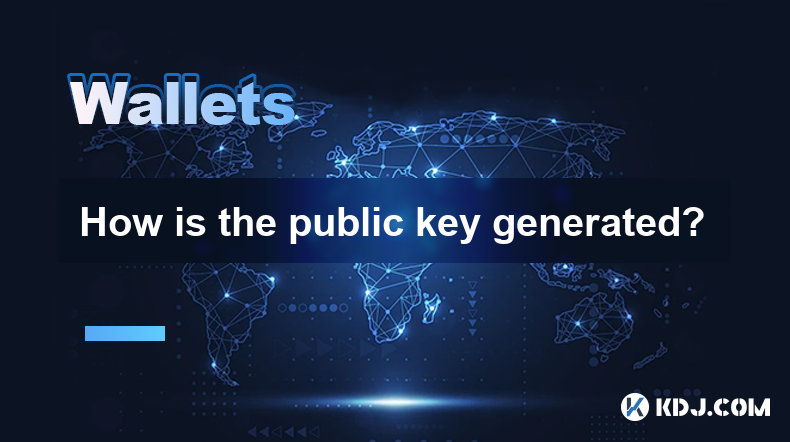
Key Points:
- Public keys are derived from private keys through a one-way cryptographic function. This process is irreversible, ensuring the security of the private key.
- The specific algorithm used for public key generation varies depending on the cryptocurrency's underlying cryptography (e.g., ECDSA, EdDSA).
- Understanding the mathematical principles behind public key generation is crucial for appreciating the security of cryptographic systems.
- While the process is complex mathematically, the user interaction is generally abstracted away by cryptographic libraries and wallets.
How is the Public Key Generated?
The generation of a public key is a fundamental process in public-key cryptography, the backbone of many cryptocurrencies. It's a crucial step in establishing secure transactions and managing digital assets. The process hinges on a mathematical one-way function: you can easily compute the public key from the private key, but you cannot derive the private key from the public key. This asymmetry is the core of the security.
The first step involves generating a private key. This is typically done using a cryptographically secure random number generator (CSPRNG). The CSPRNG produces a long, random string of bits. The length of this string depends on the cryptographic algorithm used. The higher the number of bits, generally the more secure the key. This random number is your private key; keep it absolutely secret.
Next, the private key undergoes a transformation using a specific cryptographic algorithm. The most common algorithms used in cryptocurrencies are Elliptic Curve Digital Signature Algorithm (ECDSA) and Edwards-curve Digital Signature Algorithm (EdDSA). These algorithms use complex mathematical operations on elliptic curves to derive the public key from the private key.
For example, in ECDSA, the private key is multiplied by a generator point on the elliptic curve. The result of this multiplication is a point on the elliptic curve, which is represented as coordinates (x, y). These coordinates, or a hash of them, constitute the public key. This process is deterministic; the same private key will always produce the same public key.
The process is not something a typical user needs to perform manually. Cryptocurrency wallets and software libraries handle the complex mathematical computations behind the scenes. The user simply initiates the key generation process, and the software does the rest. The public key is then made available for others to see, allowing for transactions to be verified.
The security of this system rests on the computational infeasibility of deriving the private key from the public key. The algorithms are designed to make this process computationally intractable, even with significant computing power. Therefore, even if someone obtains your public key, they cannot access your private key or your funds.
Different Cryptographic Algorithms and Public Key Generation:
Different cryptocurrencies employ different cryptographic algorithms. While the fundamental principle of deriving a public key from a private key remains the same, the underlying mathematical operations differ. For instance, Bitcoin uses ECDSA, while some altcoins might utilize EdDSA. Each algorithm offers its own trade-offs in terms of security, efficiency, and signature size. The choice of algorithm is a critical design decision for a cryptocurrency.
The specifics of public key generation within each algorithm are quite intricate and involve advanced mathematical concepts. However, the general principle remains consistent: a one-way function transforms a secret private key into a publicly available public key. The security of the system relies heavily on the robustness of this one-way function and the computational difficulty of inverting it.
Public Key Formats:
Once the public key is generated, it is often represented in different formats depending on the application. Common formats include hexadecimal representation, Base58Check encoding (used in Bitcoin addresses), and others. These formats are primarily for human readability and ease of integration with various systems. The underlying cryptographic data remains the same regardless of the chosen format. The conversion between these formats is typically handled automatically by the software.
The Role of Hashing:
Hashing functions play a crucial role in several stages of public key generation and management. While not directly involved in the core mathematical transformation of the private key, hashing is often used to compress or format the public key for various purposes, like creating addresses. Hashing ensures that even small changes to the public key result in drastically different hash values, providing additional security.
Frequently Asked Questions:
Q: Can I generate my own public and private keys manually?
A: While theoretically possible, manually generating cryptographically secure keys is extremely difficult and highly discouraged. Specialized software and libraries are designed to generate keys using robust CSPRNGs, ensuring high levels of security. Manual generation increases the risk of vulnerabilities.
Q: Is it possible to recover a private key from a public key?
A: No, it is computationally infeasible to recover a private key from its corresponding public key. The cryptographic algorithms used are designed to be one-way functions, making the reverse process practically impossible.
Q: What happens if my public key is compromised?
A: Compromising your public key does not directly compromise your private key. Your funds remain secure as long as your private key is kept secret. However, a compromised public key might indicate potential vulnerabilities in your system.
Q: How long should a private key be?
A: The length of a private key is determined by the underlying cryptographic algorithm. Longer keys generally provide higher security, offering greater resistance against brute-force attacks. The specific key size is defined by the cryptocurrency protocol.
Q: What is the difference between a public key and a wallet address?
A: A public key is the cryptographic output derived from a private key. A wallet address is a human-readable representation of a public key, often encoded using a scheme like Base58Check for easier handling and readability. The address is what you share with others to receive payments.
Disclaimer:info@kdj.com
The information provided is not trading advice. kdj.com does not assume any responsibility for any investments made based on the information provided in this article. Cryptocurrencies are highly volatile and it is highly recommended that you invest with caution after thorough research!
If you believe that the content used on this website infringes your copyright, please contact us immediately (info@kdj.com) and we will delete it promptly.
- Meme Coins Mania: Arctic Pablo Leads the New Crypto Pack
- 2025-07-02 06:30:11
- Meme Coins on the Move: Arctic Pablo, Bone ShibaSwap, and the Quest for the Next Big Thing
- 2025-07-02 06:30:11
- Crypto ETFs: Navigating the US Market Path and SEC Considerations
- 2025-07-02 06:50:12
- Pepeto: The Frog-Themed Meme Coin Set to Outperform in Q3 2025?
- 2025-07-02 05:10:12
- SYRUP Price Swings: Navigating the Opportunity
- 2025-07-02 06:35:12
- Altcoins, Collaboration, and Trump: A Wild Ride in Crypto
- 2025-07-02 05:10:12
Related knowledge
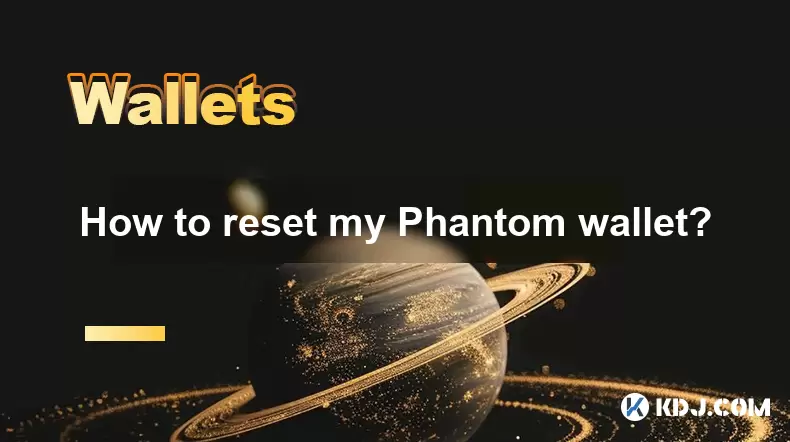
How to reset my Phantom wallet?
Jul 02,2025 at 12:36am
Understanding the Need for Resetting Your Phantom WalletIf you're using a Phantom wallet, you may encounter situations where resetting your wallet becomes necessary. This could be due to forgotten passwords, seed phrase issues, or account corruption. Phantom is a non-custodial wallet primarily used for interacting with the Solana blockchain, and it stor...
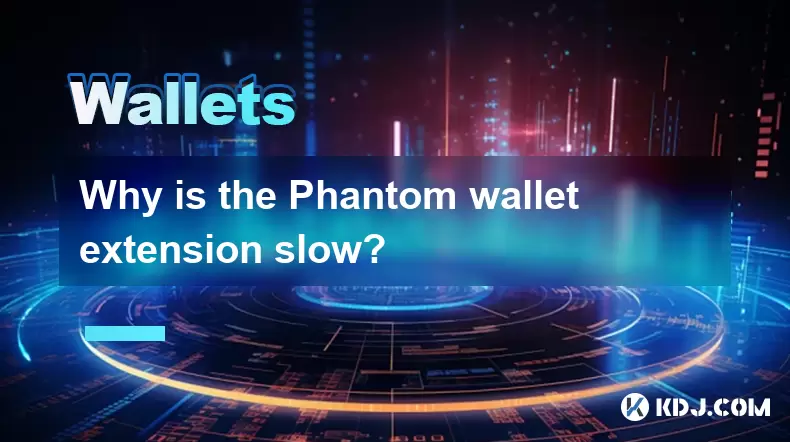
Why is the Phantom wallet extension slow?
Jul 02,2025 at 04:15am
Phantom Wallet Extension: Why Is It Slow?Phantom wallet is a widely used browser extension for interacting with decentralized applications (dApps) on the Solana blockchain. Despite its popularity, some users report that the Phantom wallet extension runs slowly at times. This article delves into potential reasons behind this performance issue and provide...
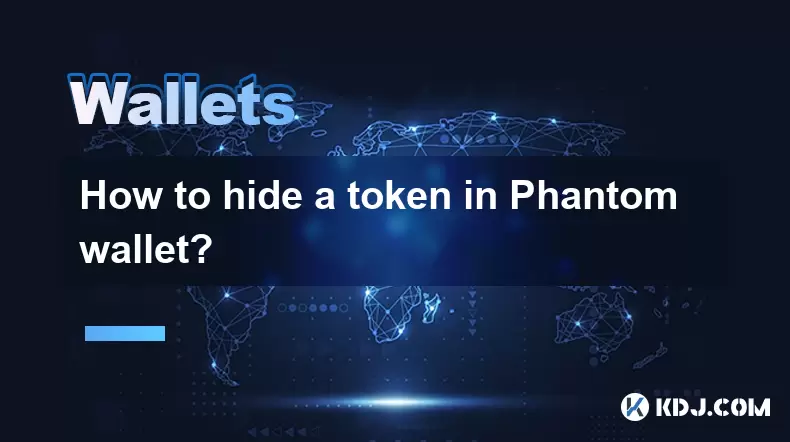
How to hide a token in Phantom wallet?
Jul 01,2025 at 05:49pm
Understanding the Phantom Wallet InterfacePhantom wallet is a popular non-custodial wallet used primarily for interacting with the Solana blockchain. It allows users to store, send, receive, and manage various tokens, including both fungible and non-fungible tokens (NFTs). Before attempting to hide a token, it's essential to understand how the wallet in...
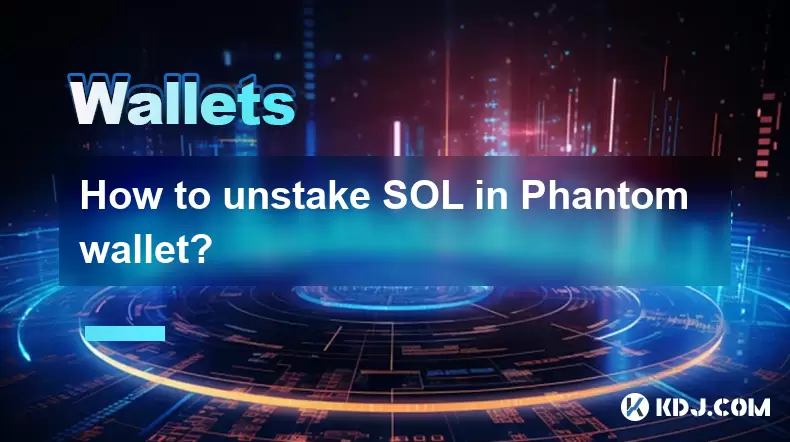
How to unstake SOL in Phantom wallet?
Jul 02,2025 at 06:49am
What Is Staking SOL in Phantom Wallet?Staking SOL involves locking up your SOL tokens to support the Solana network and earn rewards. The Phantom wallet, a popular non-custodial wallet for Solana, allows users to stake their SOL directly from the interface. When you stake SOL, it becomes temporarily unavailable as it is delegated to a validator. This pr...
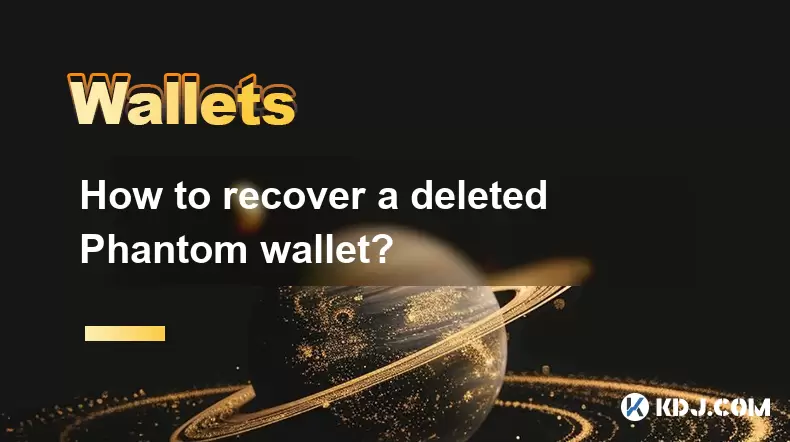
How to recover a deleted Phantom wallet?
Jul 02,2025 at 04:49am
What is a Phantom wallet?Phantom wallet is a popular non-custodial cryptocurrency wallet primarily used for interacting with the Solana blockchain. It allows users to store, send, receive, and manage digital assets like SOL tokens and NFTs. As a browser extension and mobile app, it provides a seamless interface for developers and traders alike. Since it...
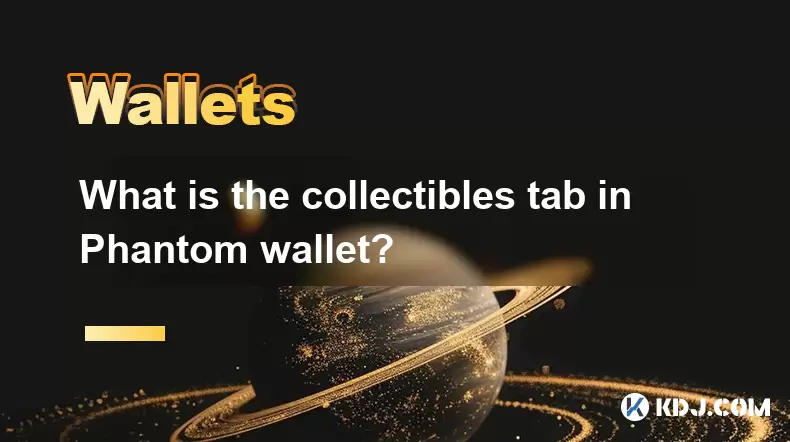
What is the collectibles tab in Phantom wallet?
Jul 02,2025 at 07:21am
Understanding the Collectibles Tab in Phantom WalletPhantom wallet is a non-custodial cryptocurrency wallet primarily used for interacting with the Solana blockchain. It allows users to store, send, and receive SOL tokens, as well as manage various types of digital assets including SPL tokens and NFTs (Non-Fungible Tokens). One of the key features withi...

How to reset my Phantom wallet?
Jul 02,2025 at 12:36am
Understanding the Need for Resetting Your Phantom WalletIf you're using a Phantom wallet, you may encounter situations where resetting your wallet becomes necessary. This could be due to forgotten passwords, seed phrase issues, or account corruption. Phantom is a non-custodial wallet primarily used for interacting with the Solana blockchain, and it stor...

Why is the Phantom wallet extension slow?
Jul 02,2025 at 04:15am
Phantom Wallet Extension: Why Is It Slow?Phantom wallet is a widely used browser extension for interacting with decentralized applications (dApps) on the Solana blockchain. Despite its popularity, some users report that the Phantom wallet extension runs slowly at times. This article delves into potential reasons behind this performance issue and provide...

How to hide a token in Phantom wallet?
Jul 01,2025 at 05:49pm
Understanding the Phantom Wallet InterfacePhantom wallet is a popular non-custodial wallet used primarily for interacting with the Solana blockchain. It allows users to store, send, receive, and manage various tokens, including both fungible and non-fungible tokens (NFTs). Before attempting to hide a token, it's essential to understand how the wallet in...

How to unstake SOL in Phantom wallet?
Jul 02,2025 at 06:49am
What Is Staking SOL in Phantom Wallet?Staking SOL involves locking up your SOL tokens to support the Solana network and earn rewards. The Phantom wallet, a popular non-custodial wallet for Solana, allows users to stake their SOL directly from the interface. When you stake SOL, it becomes temporarily unavailable as it is delegated to a validator. This pr...

How to recover a deleted Phantom wallet?
Jul 02,2025 at 04:49am
What is a Phantom wallet?Phantom wallet is a popular non-custodial cryptocurrency wallet primarily used for interacting with the Solana blockchain. It allows users to store, send, receive, and manage digital assets like SOL tokens and NFTs. As a browser extension and mobile app, it provides a seamless interface for developers and traders alike. Since it...

What is the collectibles tab in Phantom wallet?
Jul 02,2025 at 07:21am
Understanding the Collectibles Tab in Phantom WalletPhantom wallet is a non-custodial cryptocurrency wallet primarily used for interacting with the Solana blockchain. It allows users to store, send, and receive SOL tokens, as well as manage various types of digital assets including SPL tokens and NFTs (Non-Fungible Tokens). One of the key features withi...
See all articles

























































































